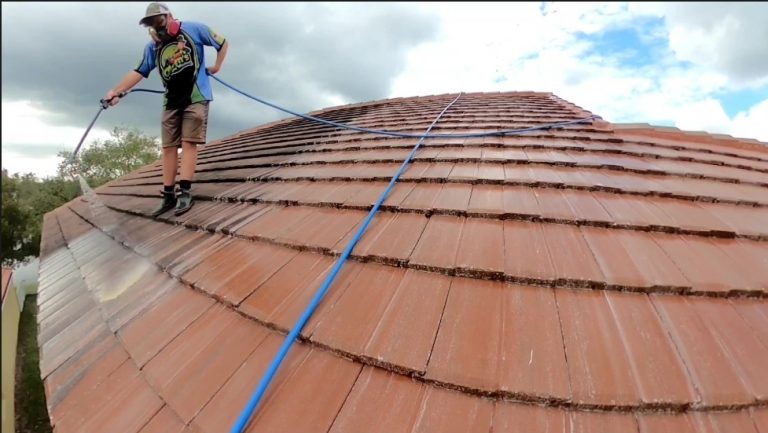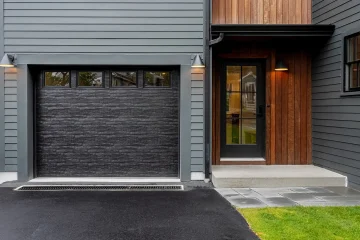The roof is one of the most critical components of any home, providing protection against the elements and contributing to the overall structural integrity of the building. Over time, however, roofs can deteriorate due to weather conditions, age, and other factors. When signs of damage appear, homeowners are faced with a crucial decision: should they opt for a full roof replacement or consider patching the affected areas? This dilemma is common and understanding the implications of each option is essential for making an informed decision. In this article, we delve into the pros and cons of roof patching, helping you weigh the potential benefits against the risks.
Every part of the home is built to last for the foreseeable future – but not forever. Roofs are not an exception to this rule. Sooner or later, shingles will crack, beams will deteriorate, and the structural integrity of the entire roof will be jeopardized.
When that happens, homeowners find themselves in a rather precarious situation: patch the damaged areas or opt for a more comprehensive (and expensive) solution. In addition, the pressure is further exacerbated by the fact that addressing roof damage must not be delayed.
Therefore: “To patch or not to patch – that is the question” – but what’s the “right” answer? Horch Roofing experts will help us solve the conundrum, so let’s dive in and explore the pros & cons of partial roof repair.
Can you repair just part of a roof?
The obvious answer is “Yes” partial roof repair is more than possible. Experts do it all the time, as do homeowners (although the DIY approach is ill-advised for many reasons that we won’t get into now). However, your decision on whether or not you should patch the roof should be based on the careful consideration of the following factors:
Pros of roof patching:
Cost-effectiveness: If damage is limited to a small area, repairing a part of the roof becomes more economical than replacing complete sections or even the entire roof, thereby making a smaller impact on your home budget.
Quick Fix: While there are exceptions, partial repairs are generally faster to complete, providing near-immediate solutions to localized problems such as water leaks or damaged beams.
Minimal disturbance: Partial repairs focus on the damaged area alone and are quick to finish, limiting the amount of disruption to the roof as a whole as well as your day-to-day functioning.
Preserves the existing roof: If the rest of the roof is in good condition, partial repairs can actually help extend its overall lifespan.
Aesthetic consistency: Patching maintains the overall uniform look of the roof – if the new materials match well.
Cons of roof patching:
Potential for Incomplete Solutions: With patching, there’s always the risk that the underlying cause of roof damage remains unaddressed, which can lead to bigger problems and costly repairs in the future.
Aesthetic inconsistency: If the new materials do not match well with the existing ones, your roof may suffer from a “patchwork look,” which is not only unsightly but can diminish the curb appeal of your property.
Recurring issues: If the roof is generally aged or in poor condition, patching is only a temporary fix until a more complete solution is found. Otherwise, it becomes another risk point threatening the integrity of your roof.
Warranty issues: This is a two-fold problem. First, some warranties may be voided if only partial repairs are done as opposed to full replacement. Second, partial repairs may not even be covered in the warranty, which typically leads to additional out-of-pocket expenses.
Cost accumulation: Patching expenses can quickly add up, especially if the repairs are frequent, resulting in greater overall cost than a single comprehensive repair/replacement.
Materials mismatch: Not all roofing materials work well with one another. If new materials do not integrate well with the existing ones, patching can lead to a whole host of new, more severe issues such as insulation damage, mold growth, or structural instability.
Is patching a roof a good idea?
From everything mentioned above, we can determine that whether patching is a smart choice or not heavily depends on specific circumstances.
If the damage is minor and localized, and there are no underlying issues that could cause the re-occurrence of the problem – then yes, patching is a viable option.
However, if the existing damage is a symptom rather than the cause of the issue, then partial repairs can only cause more problems than they solve.
With this in mind, we’re leaving you with one final piece of advice: If you’re at all uncertain about whether you should go with option a) or b), have your local roofing contractors in Coastal Maine or near you conduct a thorough inspection. Relying on their expertise is the only surefire way to make the right decision, safeguard your property long-term, and ensure your lasting peace of mind.
Deciding whether to patch your roof or opt for a full replacement is not a decision to be taken lightly. It requires careful consideration of the specific circumstances surrounding the damage, including the extent of the damage, the condition of the rest of the roof, and the potential long-term consequences. While patching can be a cost-effective and quick solution, it carries risks that may outweigh the benefits in certain situations.
Consulting with experienced roofing professionals is crucial to ensure that you make the best choice for your home and avoid potential disasters down the line. Your roof is an essential part of your home’s structure and taking the time to address any issues properly will help maintain its integrity and your peace of mind. When considering roof patching, it’s crucial to weigh the benefits against the potential risks involved. While patching can be a cost-effective solution for minor leaks, improper application can lead to more significant issues down the line. Homeowners looking for reliable roofers near me can benefit from consulting local experts who understand the specific challenges of their roofs and offer tailored solutions.



